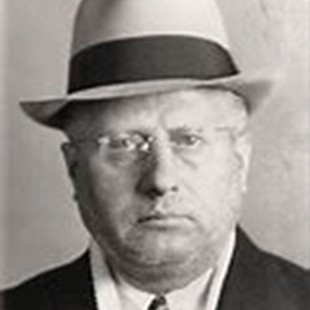
d: 1941
Paul Petrillo
Summary
Name:
Years Active:
1931 - 1938Status:
ExecutedClass:
MurdererVictims:
17+Method:
Poisoning / Bludgeoning / Drowning / Vehicular HomicideDeath:
January 22, 1941Nationality:
Italy
d: 1941
Paul Petrillo
Summary: Murderer
Name:
Paul PetrilloStatus:
ExecutedVictims:
17+Method:
Poisoning / Bludgeoning / Drowning / Vehicular HomicideNationality:
ItalyDeath:
January 22, 1941Years Active:
1931 - 1938Date Convicted:
May 13, 1940bio
Paul Petrillo, an Italian immigrant, arrived in Philadelphia alongside his cousin Herman Petrillo in 1910 during a wave of Southern European migration to the United States. He built a seemingly ordinary life within the city’s booming Italian-American community, which had nearly doubled in population over two decades. Outwardly, Paul ran a humble tailor shop in South Philadelphia. But behind the shop’s walls, he operated a far more sinister business: forging death.
Unlike Herman, who was street-savvy and violent, Paul played the role of the schemer. He was fluent in the superstitions and spiritual practices many immigrants from rural Italy still believed in. Paul marketed himself as an “advisor” in la fattura which is a kind of folk magic meant to heal personal problems, remove curses, or solve romantic and financial woes. Many women came to him, desperate, heartbroken, or impoverished, seeking solutions to their life’s misery.
It was through this role that Paul began recruiting clients into a criminal web of life insurance scams and murder. He manipulated grieving or frustrated wives into believing that magical powders or spells could “cure” their problems, often their husbands. Behind the scenes, Paul and Herman organized the insurance, forged signatures, and made the victims targets.
Paul maintained an image of being religious, trusted, and connected. In truth, he preyed upon the most vulnerable members of his own community — exploiting their belief in magic, the appeal of easy money, and the gaps in legal oversight. His tailor shop became the hub of what would later be called the Philadelphia Poison Ring, a murder-for-profit network built on superstition and death.
murder story
Paul Petrillo was the intellectual half of the Petrillo cousins. Starting in 1931, he and Herman orchestrated a string of life insurance frauds that ended in murder. The first deaths involved men like Ralph Caruso, Joseph Arena, and John Woloshyn, who were either drowned or bludgeoned during staged fishing trips. These men had all been insured without their knowledge, with forged documents and signatures and the policies containing double indemnity clauses that ensured larger payouts if the death appeared accidental.
Paul's contribution was critical. While Herman sourced the counterfeit money and hired the killers, Paul was the one managing the insurance end of the operation and falsifying documents, recruiting corrupt agents, and ensuring that payouts went to the gang or their affiliates. He often made himself or his cousin the policy beneficiary.
As the Great Depression worsened, Paul’s reach extended. He collaborated with occult practitioners like Maria Carina Favato, Josephine Sedita, and Rose Carina, who operated as “fattuchierie” (wise women) within the community. These women dispensed potions laced with arsenic or antimony to women who believed they were buying love spells or health tonics. The victims, often husbands or lovers, died slow, painful deaths. Many wives were unaware that the “magic” they were administering was poison.
Paul also worked closely with Morris Bolber, a Russian-Jewish immigrant and self-styled psychic known as “Louie, the Rabbi.” Bolber helped orchestrate insurance scams and spiritual cons, using his persona to convince clients they were doing nothing wrong. This manipulation helped shield the operation from suspicion for years.
The entire ring operated under the radar until October 1938, when Ferdinando Alfonsi died under mysterious circumstances. An informant, George Meyer, working with undercover agents Landvoight and Phillips, had been investigating Herman Petrillo for counterfeit currency. In the process, they stumbled upon the Alfonsi murder plot. Although Herman tried to arrange for Meyer to kill Alfonsi via a hit-and-run, the man was already dying from arsenic poisoning when the plan was supposed to happen.
Paul Petrillo's role was exposed when investigators linked a chain of suspicious life insurance policies to him. Each involved a newly deceased Italian immigrant, a quick death by "accident" or illness, and a large insurance payout to someone within Paul and Herman’s circle. Authorities discovered a chilling pattern: Paul had taken out policies for people who could not read English, forged their names, and arranged their deaths with full knowledge and intent.
In November 1938, both Paul and Herman were arrested. Their trial that was highly publicized and watched by the nation, revealed the full scale of the poison ring: 17 confirmed murders, with potentially more unconfirmed. Many women involved were dubbed “poison widows” by the press, though some were found to have been manipulated or unaware of what the potions contained.
Paul was convicted of first-degree murder and conspiracy to commit murder on May 13, 1940. His appeals were unsuccessful. On January 22, 1941, he was executed by electric chair at Rockview Penitentiary, the same night as his cousin Herman.
The Philadelphia Poison Ring remains one of the most disturbing examples of organized murder-for-profit in American history, and Paul Petrillo, with his calm demeanor and cold efficiency, was at the center of it all.